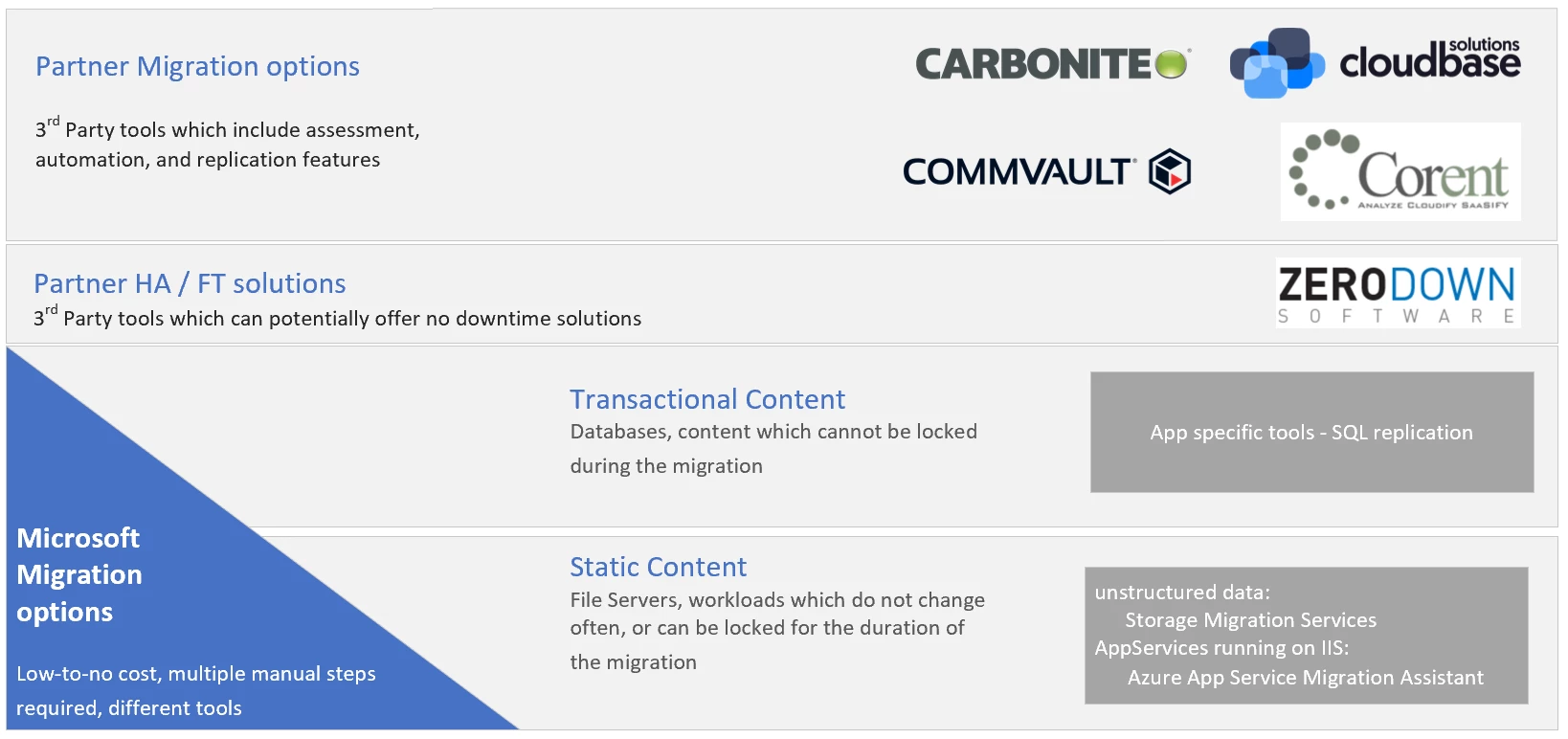This blog post was co-authored by David Armour, Principal Program Manager, Azure Stack.
Start with what you already have
Every organization has a unique journey to the cloud. This journey is based on the organization’s history, business specifics, culture, and maybe most importantly, their starting point. While it can be hard for some to say goodbye to their current virtualization environment and way of doing things, the journey to the cloud provides many options, features, functionalities, and opportunities to improve existing governance, operations, and implement new ones. The journey to the cloud can also provide the opportunity to redesign applications and take advantage of the cloud architecture. Additionally, Microsoft Azure gives you the option to host your virtual machines (VMs) in the public cloud or in your own facility with Azure Stack.
In most cases, this journey starts with a lift and shift of the existing servers, either virtual machines or physical servers. Because Azure Stack at its core is an infrastructure-as-a-service (IaaS) platform, the right way to think about this first phase of the journey is as a lift and optimize process. Moving the servers should be the first step towards enabling modern operations across your workloads. That could mean something as little as selecting the right size for your VMs so that you “pay for what you use,” enabling self-service by doing it yourself, automating deployments, or even building on the success of others.
What to think about when migrating
The Azure migration center provides a good model to help start the assessment, make sure you have the right stakeholders involved and help create the proper frame for your migration.
As you start this assessment, there are several factors which you can use to identify what is the best suited platform for your workload, whether that is Azure or Azure Stack:
- Cost
- Connectivity requirements
- Potential regulations and data gravity requirements
- High availability and regional requirements

After you complete the assessment and planning, you will need to select the right tool for the migration.
Our partner ecosystem includes ISVs that have built solutions which range from simple migrations, to “as a Service” solutions. There are also Microsoft migration options which require manual steps to implement, but offer a potential lower cost.

Partner options
Azure Stack has ISV solutions for every stage of application migration, from envisioning and/or discovery, to modernization by leveraging PaaS capabilities. Each have their own capabilities and improve the process in their own way.
- Carbonite – Offers server migration, backup, high availability of Windows Servers, and enterprise protection for Microsoft Windows endpoints.
- Cloudbase – Offers a migration-as-a-service solution called Coriolis which integrates with Azure Migrate and uses it for the initial assessment, as well as the VM-size mapping.
- Coriolis will be available as a trial version in the Azure Stack Marketplace, offering free VM migrations to validate the process and make sure it is the right solution.
-
Commvault – Complements migration, management, protection, and activation of data on Microsoft Azure Stack and other hybrid cloud infrastructure solutions. Commvault helps enterprises increase agility, reduce costs, and discover valuable insights.
-
Commvault is available in the Azure Stack Marketplace and it offers a 60-day free trial that can be upgraded in place to a full version.
-
- Corent – Offers a migration-as-a-service solution. See below for published cases studies:
- “Migrating a BFSI(Banking, Financial Services and Insurance) Application to Microsoft Azure Stack using SurPaaS MaaS”
-
“Calligo delivers successful migration to Azure Stack using Corent Technology SurPaaS platform”
-
Corent Technology is offering a free POC of scanning and migrating of up to five VMs to readers of this blog. Email sales@corenttech.com with #AzureStackBlog to set up your free PoC.
-
ZeroDown – Provides business continuity and high availability across multiple stamps, and even during a migration process.
-
-
This isn’t really a migration tool, instead it can offer fault tolerance and high availability for your solution.
-
This solution can also help with creating fault tolerance and high availability across multiple stamps. Please see our demo of an application running across two Azure Stack stamps.
- It is also available in the Azure Stack Marketplace and offers a 30-day free trial
-
Microsoft migration options
The Storage Migration Service makes it easier to migrate servers and to target VMs in Azure Stack. You can use the graphical tool that inventories data on servers and then transfer that data and configuration to the VMs already deployed on Azure Stack. The service works without apps or users having to change anything. Depending on the assessment, some of these workloads might go to Azure IaaS, or Azure Files.
Use Storage Migration Service because you’ve got a server or lots of servers that you want to migrate to Azure Stack virtual machines. Storage Migration Service is designed to help by doing the following:
- Inventory multiple servers and their data.
- Rapidly transfer files, file shares, and security configuration from the source servers.
- Optionally take over the identity of the source servers, also known as cutting over, so that users and apps don’t have to change anything to access existing data.
- Manage one or multiple migrations from the Windows Admin Center user interface.
Typically, in your migration journey, you will use a mixture of tools. So you will need to understand the options available in order to select the right tool for the specific workloads.
Learn more
In this blog series
We hope you come back to read future posts in this blog series. Here are some of our planned upcoming topics:
